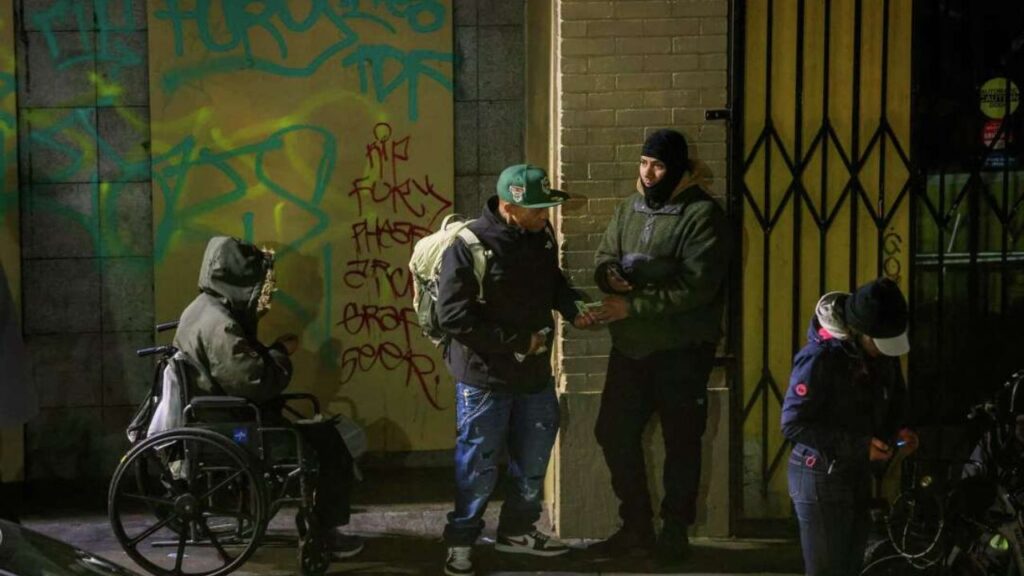Drug trafficking is a serious crime that involves the illegal transportation, importation, and sale of controlled substances. According to the U.S. Drug Enforcement Administration (DEA), drug trafficking is one of the most significant threats to public health and safety in the country. But which city in California is the most notorious for drug trafficking? According to a recent report by the DEA, the answer is Los Angeles.
Los Angeles: A Hub for Drug Trafficking
Los Angeles is the largest city in California and the second-largest in the U.S. It is also a major gateway for drug trafficking, both domestically and internationally. According to the DEA, Los Angeles is home to several transnational criminal organizations (TCOs) that operate sophisticated drug trafficking networks across the state and the nation.
Some of the drugs that are commonly trafficked in Los Angeles include methamphetamine, heroin, fentanyl, cocaine, and marijuana. These drugs are either produced locally, smuggled from Mexico or other countries, or diverted from legitimate sources such as pharmacies and doctors.
The DEA estimates that Los Angeles is responsible for distributing about 70% of the methamphetamine available in the U.S. market. Methamphetamine is the most prevalent drug in Los Angeles, and its purity and potency have increased over the years. Methamphetamine is also often mixed with fentanyl, a synthetic opioid that is 50 to 100 times more potent than morphine. Fentanyl is extremely dangerous and can cause fatal overdoses even in small doses.
Heroin is another drug that is widely trafficked in Los Angeles. The DEA reports that Los Angeles is the primary source of black tar heroin, a sticky and dark form of the drug, for the western U.S. Black tar heroin is typically produced in Mexico and smuggled across the border. Heroin is also often laced with fentanyl, increasing the risk of overdose and death.
Cocaine is a stimulant drug that is derived from the coca plant. Cocaine is mainly produced in Colombia and other South American countries, and then transported to Los Angeles through Mexico or the Caribbean. Cocaine is usually sold in powder form, but it can also be processed into crack, a more potent and addictive form of the drug. Cocaine is often used in combination with other drugs, such as heroin, methamphetamine, or alcohol.
Marijuana is the most widely used illicit drug in the U.S. and in Los Angeles. Marijuana is a plant that contains the psychoactive compound THC, which produces euphoria, relaxation, and altered perception. Marijuana can be smoked, eaten, or vaporized. Marijuana is legal for medical and recreational use in California, but it is still illegal under federal law. The DEA states that Los Angeles is a major source of marijuana for the U.S. market, as well as a transit point for marijuana from Mexico and Canada.
The Consequences of Drug Trafficking in Los Angeles
Drug trafficking in Los Angeles has severe consequences for the city and its residents. Drug trafficking fuels violence, corruption, and crime, as rival TCOs compete for territory, customers, and profits. Drug trafficking also undermines the rule of law, as TCOs bribe, threaten, or kill law enforcement officials, judges, witnesses, and journalists. Drug trafficking also harms the environment, as TCOs use chemicals, deforestation, and pollution to produce and transport drugs.
Drug trafficking also affects the health and well-being of the people who use drugs, as well as their families and communities. Drug use can cause addiction, overdose, disease, injury, and death. Drug use can also impair judgment, decision-making, and behavior, leading to poor academic, occupational, and social outcomes. Drug use can also increase the risk of contracting or transmitting HIV, hepatitis, and other infections, as well as mental health problems, such as depression, anxiety, and psychosis.
The Solutions to Drug Trafficking in Los Angeles
Drug trafficking in Los Angeles is a complex and multifaceted problem that requires a comprehensive and coordinated response. The DEA and other federal, state, and local agencies work together to disrupt and dismantle the TCOs that operate in Los Angeles, as well as to seize and destroy their drugs, assets, and infrastructure. The DEA and its partners also collaborate with international counterparts to target the source countries and regions of drug production and trafficking.
However, law enforcement alone is not enough to solve the problem of drug trafficking in Los Angeles. Prevention, treatment, and recovery are also essential components of a balanced and effective strategy. Prevention programs aim to educate and empower the public, especially the youth, about the dangers and consequences of drug use and trafficking.
Treatment programs provide evidence-based and compassionate care to people who suffer from substance use disorders, helping them to overcome their addiction and restore their health and dignity. Recovery programs support people who have completed treatment, helping them to maintain their sobriety and reintegrate into society.
Drug trafficking in Los Angeles is a serious challenge that affects the entire city and beyond. By working together, we can reduce the supply and demand of drugs, and create a safer and healthier community for all.
Conclusion
In conclusion, Los Angeles is the drug trafficking capital of California, as it hosts several transnational criminal organizations that distribute various drugs across the state and the nation. Drug trafficking in Los Angeles has negative impacts on the public health, safety, and environment of the city and its residents. To combat drug trafficking in Los Angeles, a comprehensive and coordinated approach is needed, involving law enforcement, prevention, treatment, and recovery programs. By working together, we can reduce the supply and demand of drugs, and create a safer and healthier community for all.


